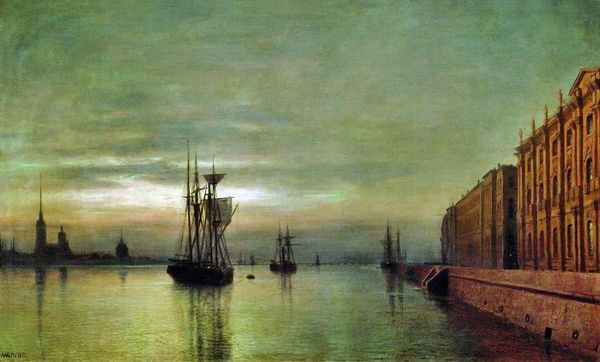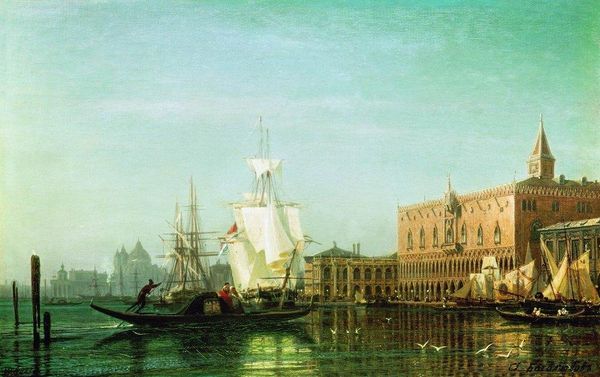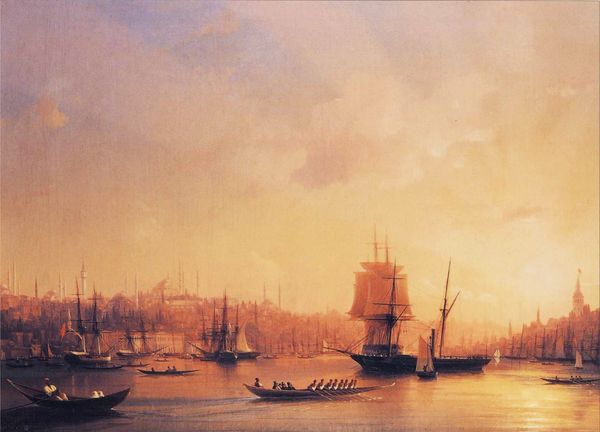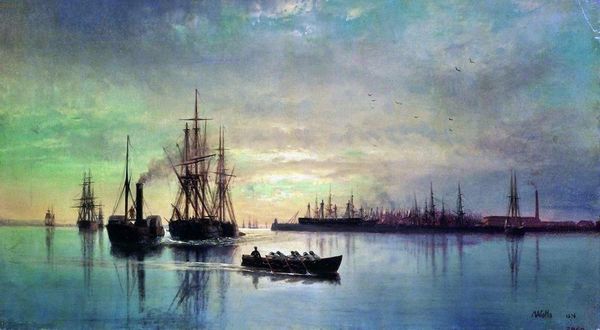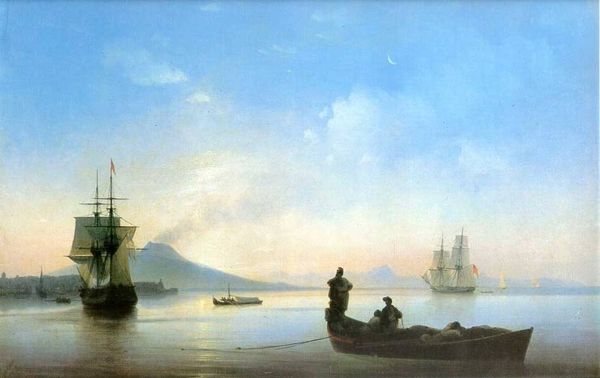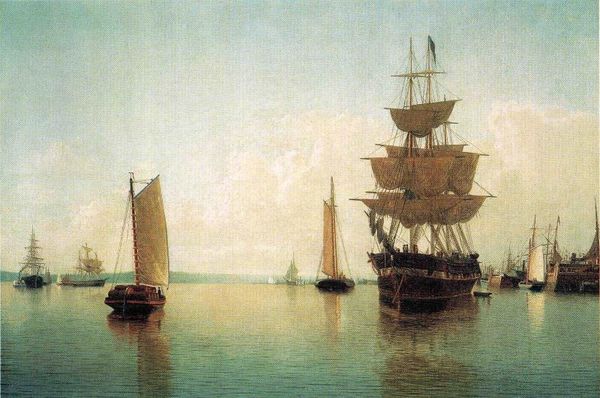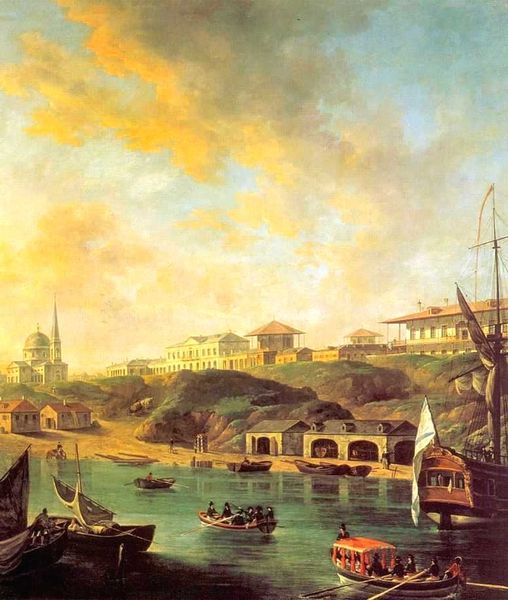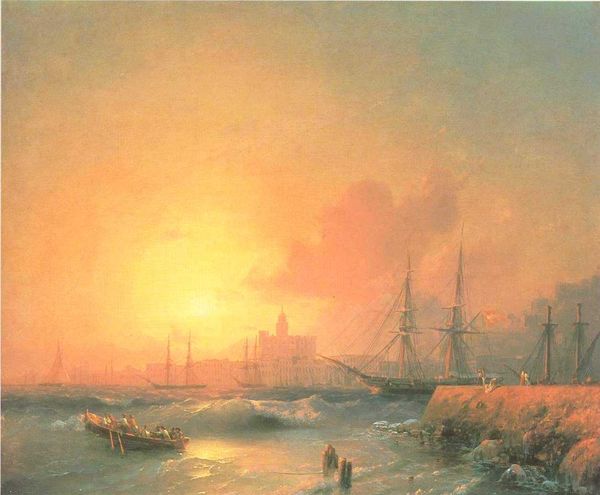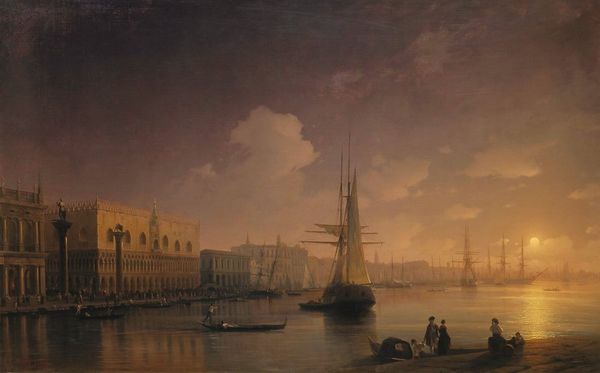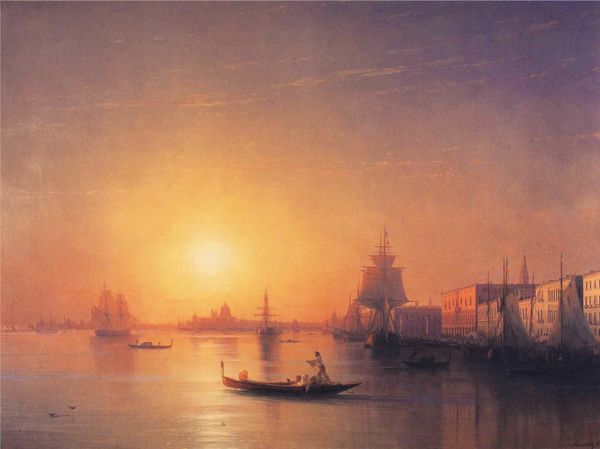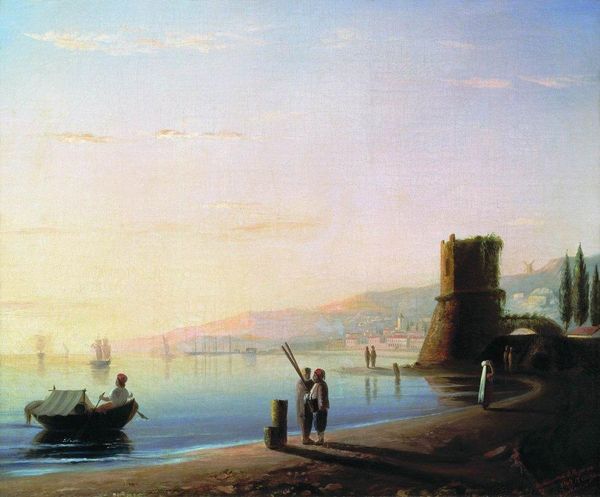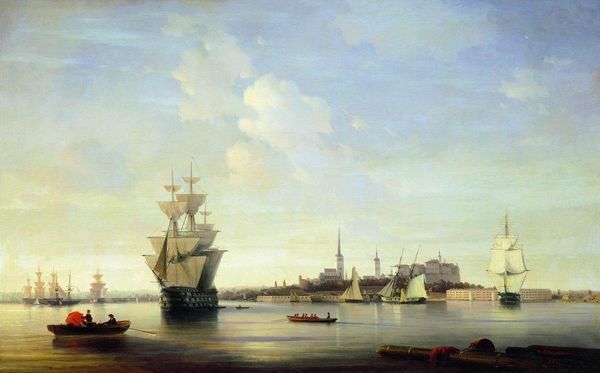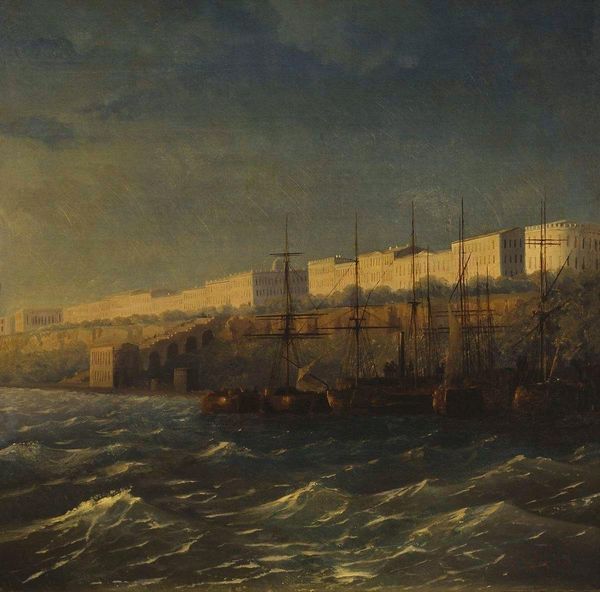
Dimensions: 116 x 188 cm
Copyright: Public domain
Curator: What strikes you immediately about this artwork? It’s titled "Venice," painted in 1842 by Ivan Konstantinovich Aivazovsky. Editor: The sheer golden light, absolutely. It almost dissolves the architectural forms. The city feels dreamlike, emerging from this warm, diffused glow. Curator: Indeed, the luministic qualities are quite remarkable. Aivazovsky manipulates oil paint to create a pervasive sense of atmospheric perspective. Notice how the tonality shifts and creates a blurring effect? It lends to the subject a kind of intangible weightlessness. Editor: And what effect do you believe this was intended to achieve? Given the historic context of Venice as a crucial maritime and trade hub, does this artistic decision speak to Venice’s societal importance, or does it aim for something else? Curator: I see his use of color here not just representationally, but formally, as a crucial element. That orange permeates every corner and establishes tonal unity, so as to focus the eye not on the narrative but rather on his technical brilliance. A semiotic reading, you might say. Editor: That's certainly valid. I am equally fascinated, however, with its construction of Venice as an imagined space. By 1842, the city's political and economic power had waned. I wonder to what extent the artwork contributes to the idealization and romanticization of Venice within its specific socio-political conditions. Curator: Interesting consideration! I’m less persuaded by external contexts, though. Notice the linear arrangement of the vessels; and the lines repeated by buildings to the right, which seem, themselves, repeated within the image’s vanishing point. Compositionally, he repeats lines and elements, unifying water and city and ships. Editor: It's tempting to position it within the history of Venetian painting and its engagement with maritime power. To do so offers insights into Venice as an important hub in its day. Yet perhaps what we find in this image has more to do with subjective emotions evoked by Aivazovsky. Curator: We both approach it through lenses, structural versus historical. Ultimately, that's how such works survive, through varied analysis. Editor: It underscores how a single work contains many layers of interpretations, relevant within different contexts across time. Thank you.
Comments
No comments
Be the first to comment and join the conversation on the ultimate creative platform.
